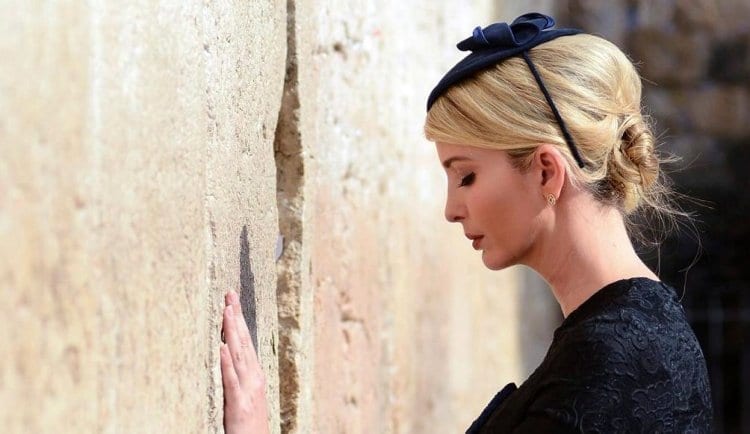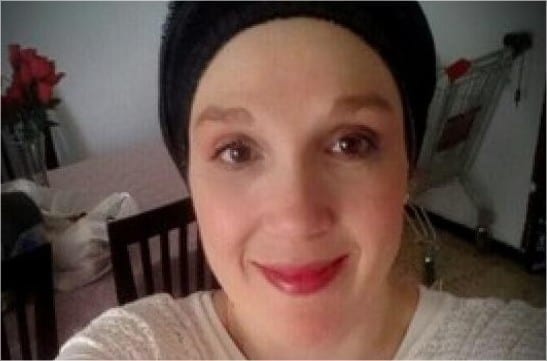As a young girl in Johannesburg, South Africa, Gina Goldstein never envisioned herself growing up to become the Chief Rebbetzin of her country. In fact, when she was still school age, her family was not yet observant. The granddaughter of European refugees, Gina attended a traditional South African Jewish day school where most of the students, like her and her family, were secular. However, as Gina grew up, her parents became baalei teshuvah and started a shul in their home (which is still thriving today). By the time she reached high school, the entire family, including Gina and all five of her sisters, had become shomrei mitzvos.
Gina married Warren Goldstein, who received smichah right before their wedding. “I knew I was marrying a rabbi,” she admits, but she had no idea how high—or how quickly —he would rise. After serving as a rabbi, and earning his PhD, Rabbi Goldstein was appointed as Chief Rabbi of South Africa at the age of 32. Gina was 29. Becoming the Chief Rebbetzin before the age of 30 was “very daunting,” Gina admits. “We had young children. I wasn’t prepared for it, and in a way you can never be prepared for it… I’ve had a lot to learn along the way, [and]I’ve had to encounter many unique people and situations…”
One of her big challenges, Gina says, is being confident and fully herself in a widely diverse society, both in the Jewish world and out. “It’s important for me to be authentic…to be proud of our Torah and of being a religious Jewish woman in all social contexts.” Gina is unique because, despite her high profile, she has a realness about her that is very relatable, and very human. (Don’t call her “Rebbetzin” —trust me, I tried—she will insist you call her Gina.) I can’t help but feel that I could easily see us baring our souls over tea at her kitchen table. Unlike most public figures, I can actually identify with Gina’s challenge as an ordinary person trying to find her place in an extraordinary role.
Almost eleven years later, Gina can appreciate how “exciting” her job is. As Chief Rebbetzin, she works as a partner with her husband, acting as a sounding board for him, advising him on his writing, accommodating the many guests who come to their home for shiurim, and traveling to different communities around the country, all while playing ringmaster in a busy Jewish home. “Running our home and raising our family is part of him being a great rabbi,” she says. “And being involved in what’s going on in his life makes him a greater rabbi…I do feel all of his successes are partially mine, and all of my successes are partially his.
We’ve shared the load in so many ways. We never divided our talents, we pooled our talents together.” And now, those combined talents are making a global impact. About a year ago, the Goldsteins had a “crazy kernel of an idea”: Choose one Shabbos, and get every Jew in South Africa to keep it. They would call it “The Shabbos Project.” The goal was lofty, to say the least, considering that a significant percentage of the population didn’t keep Shabbos regularly. The Goldsteins’ choice to focus on Shabbos was wiser than the naysayers realized. As a community-based project with the tagline “Keeping it Together,” The Shabbos Project appealed to South African Jewry at large, a community that is characterized by its achdus. “We have quite a homogeneous community,” Gina explains, “with a natural kavod ha’Torah and kavod rabbanim. It’s unified under one Chief Rabbi, under one beis din. I think, for that reason, the vast majority of South African Jews, no matter how religious or irreligious, consider themselves Orthodox. Because of that unity, I think there’s fertile ground for people to plug into Yiddishkeit.” Beyond that, Shabbos in and of itself has an appeal to even the most secular Jew who is desperate, in this fast-paced world, for time to just breathe. “Shabbos is an easy sell,” Gina jokes.
For these reasons, word about The Shabbos Project took root and spread quickly. To help those unfamiliar with Shabbos observance prepare, Gina wrote the “Unofficial Guide to Keeping Shabbos,” outlining the halachos that people would need to know, including making Kiddush and washing for challah, how to prepare and heat food, and prohibitions on cell phone use and makeup. A challah-baking event was held the Thursday night before The Shabbos Project, with 2,000 women in attendance to make and tear challah with a brachah. When the Goldsteins conceived of The Shabbos Project, they felt that if even five Jews kept Shabbos who hadn’t before, the project would have been successful. In the end, approximately 55,000 Jews—75% of the entire South African Jewish community—kept Shabbos. The experience, according to thousands of participants, was life-changing.
Now plans are underway for an international The Shabbos Project for October 2014 (Parshas Noach), and hundreds of communities have already partnered to make it happen. “The beauty of the idea was in its simplicity, just to get everybody to keep Shabbos in a unified way,” Gina says. “The Shabbos Project taught me the power of kiruv and Torah to transform lives.” The experience was also transformative for Gina, who describes herself as “shy.” Until recently, she kept herself mostly out of public view, but in order to support The Shabbos Project, she made her first highprofile appearance in a promotional video.
In fact, her interview with me is the first she’s ever done. “I’m pacing the room with anxiety as we speak,” she admits, laughing. Yet for all of her shyness, Gina is also passionate about the work she does and hopes to do in the future. “My husband always says, ‘We don’t predict the future, we create the future.’ We don’t know what Hashem has planned. But whatever the plan is, we need to be involved and to take responsibility instead of waiting passively for the future to happen. We have “The International Shabbos Project” coming up, and who knows, in 20, 30, 40 years, what klal Yisrael will look like?” If Gina Goldstein has anything to do with it, I have a feeling we’ll be looking great.





